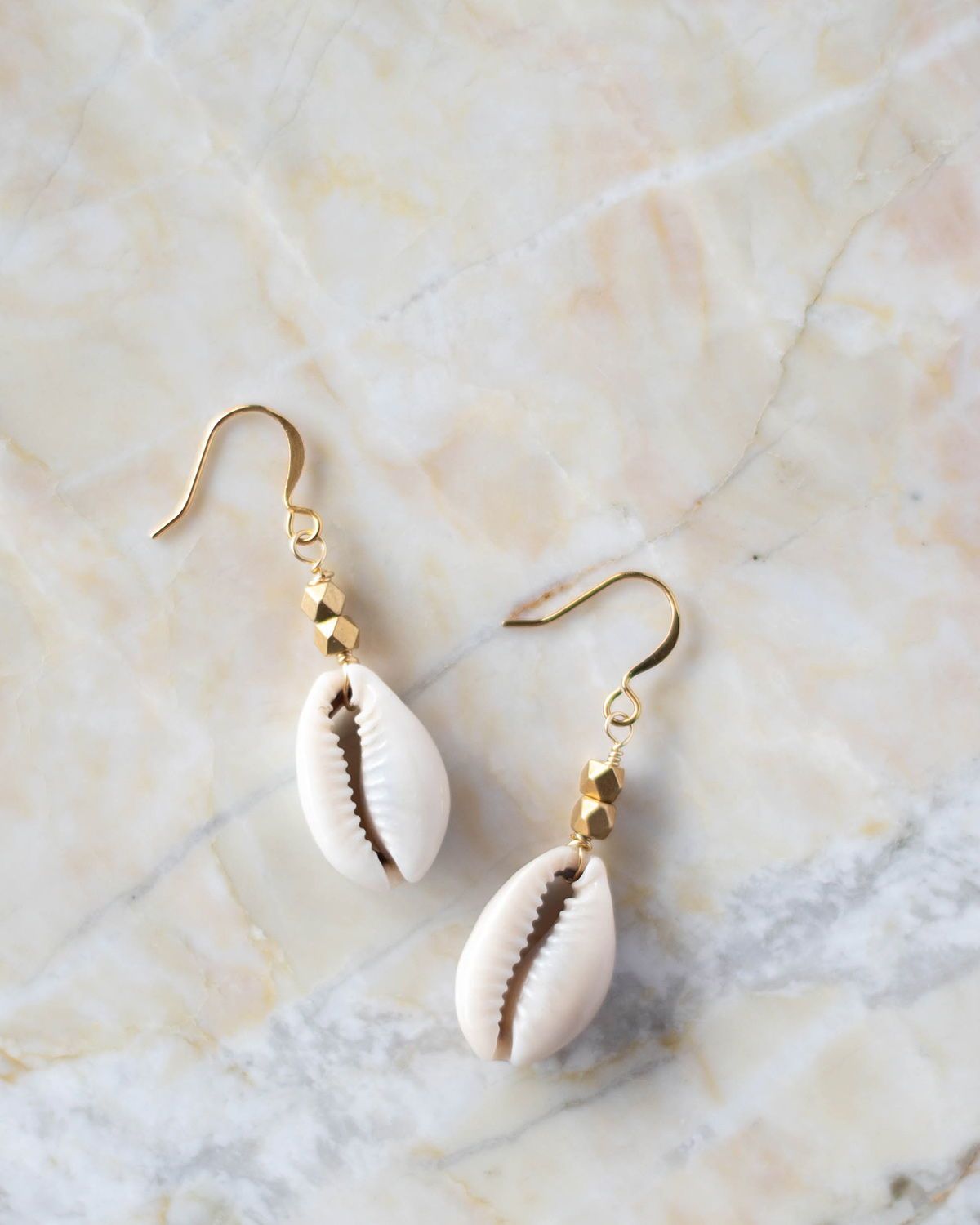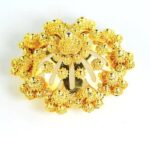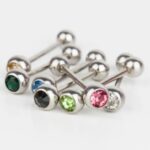When it comes to selecting a diamond for your ring, making the right choice is crucial. Diamonds have long been revered for their beauty and symbolism, making them a popular choice for jewelry, especially in rings. In this article, we will explore the importance of selecting the right diamond for your ring and delve into the factors that should be considered during the selection process.
Diamonds hold significant value not just in terms of their price tag, but also as a representation of love, commitment, and milestones in life. Whether you are proposing to your partner or celebrating a special occasion, choosing the perfect diamond can enhance the meaning behind the ring and create a lasting impression.
Understanding the factors that contribute to a diamond’s quality is essential when it comes to making an informed decision. The 4Cs – carat weight, cut, color, and clarity – serve as the core factors that determine a diamond’s value and overall visual appeal. Each of these elements plays a key role in the overall beauty and brilliance of the diamond.
By delving into these factors and offering guidance on setting a budget, researching reputable sellers, considering different diamond shapes, understanding trade-offs among the 4Cs, evaluating certifications, and exploring additional considerations such as band style and metal type, this article aims to equip readers with valuable knowledge on how to select the perfect diamond jewelry for their ring. Prepare to become a smart diamond ring shopper as we delve into each aspect of selecting a rings diamond jewelry.
Understanding the 4Cs
When it comes to selecting a diamond for your ring, understanding the 4Cs is essential. The 4Cs refer to carat, cut, color, and clarity – the key factors that determine the quality and value of a diamond. By familiarizing yourself with these factors, you can make an informed decision and choose a diamond that meets your specific preferences and budget.
- Carat: Carat refers to the weight of a diamond, with one carat equaling 200 milligrams. While many believe that carat size is the most important factor in choosing a diamond, it’s crucial to remember that the other three factors (cut, color, and clarity) also play a significant role. Depending on your personal style and budget constraints, you may prioritize carat size differently.
- Cut: The cut of a diamond determines its brilliance and sparkle. It involves how well the facets of the stone interact with light. A well-cut diamond will reflect light internally and externally, creating maximum brilliance. The GIA scale categorizes diamond cuts as Excellent, Very Good, Good, Fair, or Poor. Choosing an excellent or very good cut is ideal for those seeking exceptional radiance and fire.
- Color: Diamonds come in various hues ranging from colorless to light yellow or brown tones. The GIA grades diamonds on a scale from D (colorless) to Z (light yellow or brown). Ultimately, color grading is subjective based on individual preference. If you desire a colorless appearance for your diamond ring, selecting a stone graded within the D-F range would be ideal.
- Clarity: Clarity refers to any internal or external blemishes or inclusions present in a diamond when viewed under magnification. The GIA uses categories such as Flawless (no blemishes or inclusions visible under magnification) to Included (blemishes or inclusions visible to the naked eye).
While flawless diamonds are rare and highly valued, the majority of diamonds have minor inclusions that do not affect their beauty. Choosing a diamond with at least a VS1 (Very Slightly Included) clarity grade ensures any inclusions are minimally visible.
Understanding these 4Cs will empower you to make an informed decision when selecting a diamond for your ring. It’s important to note that finding a balance between these factors is crucial, based on your personal preferences and budget limitations. By considering each aspect of the 4Cs, you can ensure that the diamond you choose reflects your unique style while meeting your desired quality and value requirements.
Setting a Budget
When it comes to purchasing a diamond ring, setting a budget is an essential step in the decision-making process. Deciding how much you can afford to spend on a diamond ring ensures that you are making a financially responsible choice and helps narrow down your options within the vast array of available choices.
While determining the budget for a diamond ring is a personal decision that depends on individual circumstances, there are several factors to consider that can guide you in this process.
The first factor to consider when setting your budget is your personal financial situation. It is crucial to evaluate your current income, savings, and any other financial obligations or goals you may have. Purchasing a diamond ring should not put you in significant debt or jeopardize your financial stability. Therefore, it’s important to assess how much you can comfortably afford without stretching beyond your means.
Another factor to consider is the desired specifications of the diamond itself. The 4Cs (carat weight, cut grade, color grade, and clarity grade) play a significant role in determining the price of a diamond. Generally, larger carat weights, higher cut grades, colorless diamonds, and flawless clarity grades command higher prices. Understanding how these factors impact the cost of a diamond will give you an idea of what range of prices to expect based on your preferences.
| Carat Weight | Average Price Range ($) |
|---|---|
| 0.25 – 0.50 | 500 – 2,000 |
| 0.51 – 1 | 2,000 – 10,000 |
| 1.01 – 2 | 10,000 – 50,000 |
| 2.01+ | Above 50,000 |
It is important to note that these prices are approximate and can vary depending on other factors such as cut grade, color grade, clarity grade, and market pricing fluctuations. By considering both your financial situation and the desired specifications of the diamond ring you want to purchase, you can determine a realistic budget that ensures you make a wise investment while staying within your means.
Remember, setting a budget for your diamond ring purchase is about finding the right balance between quality and affordability. It is always recommended to prioritize well-cut diamonds with good sparkle over larger carat weights or higher color grades if it means compromising on cut quality. With careful consideration of your finances and diamond preferences, you can find a beautiful diamond ring that fits perfectly within your budget.
Researching Diamond Dealers
When it comes to purchasing a diamond ring, one of the most crucial steps is finding a reliable and reputable diamond dealer. With so many options available in the market, it’s essential to do your research to ensure that you are making a purchase from a trustworthy seller. Here are some tips on how to research and choose reputable diamond dealers.
1. Check Certifications:
One of the first things to look for in a diamond dealer is whether they have proper certifications. The Gemological Institute of America (GIA) and American Gem Society (AGS) are two well-known and reputable diamond certification entities. Look for dealers who offer diamonds certified by these organizations as it guarantees that you are buying a genuine, high-quality diamond.
2. Read Customer Reviews:
Another effective way to assess the reliability of a diamond dealer is by reading customer reviews. Take the time to search for customer feedback online or ask friends and family members for recommendations based on their experiences. Positive reviews and testimonials can give you valuable insights into the dealer’s reputation and the quality of their products.
3. Compare Prices:
While it’s important to have a budget in mind, it’s equally vital to compare prices among different dealers. Be cautious if you come across deals that seem too good to be true, as they might indicate low-quality diamonds or unethical practices. Look for dealers who offer competitive prices without compromising on quality.
Remember, investing time in researching and selecting reliable diamond dealers will ensure that you purchase an authentic diamond of excellent quality from a trustworthy source. By following these tips, you can make an informed decision when selecting your diamond ring vendor and have peace of mind throughout your purchase process.
Deciding on the Diamond Shape
When it comes to selecting a diamond for your ring, one of the most important factors to consider is the shape of the diamond. The shape of the diamond will not only determine its overall appearance but also how it sits on your finger. With a wide variety of diamond shapes available in the market, ranging from round and princess to cushion and emerald, finding the perfect shape for your ring can seem overwhelming.
The first step in deciding on the diamond shape is considering your personal style. Each diamond shape has its own unique characteristics that appeal to different individuals. For example, if you prefer a classic and timeless look, a round cut diamond may be the perfect choice for you. On the other hand, if you prefer something more modern and distinct, an emerald or marquise cut diamond may suit your style better.
Another important consideration when choosing a diamond shape is your finger shape and size. Certain shapes are more flattering on certain finger types. For instance, elongated shapes like oval or pear can help create an illusion of longer fingers, while round or princess cuts may complement wider fingers. It’s advisable to try different shapes at a local jewelers’ or use virtual try-on tools online to visualize how each shape will look on your hand.
To assist in understanding the various available diamond shapes and their characteristics, consult with an experienced jeweler who can provide further guidance based on your preferences and budget. By taking the time to consider these factors when deciding on a diamond shape for your ring, you can ensure that it perfectly matches both your personal style and hand aesthetics.
| Diamond Shape | Characteristics |
|---|---|
| Round | The most popular choice; offers maximum brilliance due to its symmetrical design. |
| Princess | A square shape with pointed corners; renowned for its exceptional brilliance and modern appeal. |
| Cushion | Known for its soft corners and larger facets that enhance the diamond’s brilliance and vintage charm. |
| Emerald | An elegant rectangular shape with step-cut facets that create a hall-of-mirrors effect. |
Balancing the 4Cs
Understanding the Importance of Balancing the 4Cs
When it comes to selecting a diamond for your ring, finding the perfect balance among the 4Cs – carat, cut, color, and clarity – is crucial. Each of these factors contributes to the overall quality and value of a diamond. However, it’s important to note that achieving perfection in all four categories may not always be feasible or within your budget. Therefore, understanding how to make trade-offs based on your preferences and budget constraints becomes essential.
Prioritizing Based on Individual Preferences
Every person has unique tastes and preferences when it comes to their diamond jewelry. Some individuals may prioritize a larger carat size over exceptional clarity or color. Others might place more importance on a dazzling cut that allows the diamond to reflect light brilliantly. It’s essential to identify which of the 4Cs is most important to you personally so that you can allocate more resources towards that particular aspect.
For example, if size matters most to you, you may choose a slightly lower clarity grade or color grade as long as it is still within an acceptable range. On the other hand, if brilliance is your top priority, you can opt for a smaller carat size while focusing on excellent cut and clarity grades.
Making Trade-Offs Within Your Budget
Budget limitations are another factor that influences diamond selection decisions. Before beginning your search for the perfect diamond ring, it’s important to establish a realistic budget. This will guide your decision-making process throughout the shopping journey.
Once you have determined your budget, consider how you can allocate funds among the 4Cs. For instance, if you have a limited budget but desire a larger carat size, you may need to compromise by selecting a lower color or clarity grade. Alternatively, if high-quality cut and clarity are non-negotiable for you, it may be necessary to choose a smaller carat size to stay within your budget range.
By understanding your preferences and budget limitations, you can make informed trade-offs to find a diamond that satisfies both your desires and financial boundaries. Remember, the goal is to strike a balance among the 4Cs that aligns with your personal preferences while still meeting your budget requirements.
Evaluating Diamond Certifications
When it comes to buying a diamond ring, one of the most important factors to consider is the quality and authenticity of the diamond itself. This is where diamond certifications play a crucial role. Diamond certifications are documents issued by reputable gemological laboratories that provide an assessment of a diamond’s quality and specifications. By evaluating these certifications, you can ensure that you are getting what you paid for and avoid any potential scams or fraudulent activities.
The importance of diamond certifications cannot be overstated. They serve as proof of authenticity, allowing you to have peace of mind knowing that your diamond is genuine and not a lab-grown or synthetic substitute. Additionally, certifications provide an objective evaluation of a diamond’s quality based on internationally recognized standards.
When evaluating diamond certifications, it is essential to look for recognized and respected certification entities such as the Gemological Institute of America (GIA) or the American Gem Society (AGS). These organizations have established themselves as leaders in grading diamonds based on their cut, color, clarity, and carat weight – also known as the 4Cs. Their expertise and reputation ensure that you are receiving accurate information about your diamond’s characteristics.
It is also vital to understand how to read a certification document properly. Familiarize yourself with the terminology used in the document and what each grading means for your specific diamond. The information provided on the certification should align with what you were presented when purchasing the ring. If there are any discrepancies or inconsistencies, do not hesitate to ask questions or seek clarification from the seller.
By taking the time to evaluate diamond certifications from reputable entities like GIA or AGS, you can guarantee that your chosen ring meets your desired level of quality and authenticity. Being an informed shopper will help you make confident decisions when selecting your diamond jewelry.
Additional Considerations
When selecting a diamond ring, it is crucial to consider not only the diamond itself but also the band style, metal type, and ring design. These additional considerations play a significant role in enhancing the overall aesthetic appeal of the ring and ensuring its durability. This section will provide valuable insights into these factors to help you make an informed decision.
Band Style
One important aspect to consider when choosing a diamond ring is the band style. The band refers to the part of the ring that encircles your finger. There are various band styles available, each offering a unique look and feel.
One popular option is the solitaire band, which features a single diamond at the center and creates a classic and elegant look. Another popular choice is the halo band, where smaller diamonds surround a central diamond, creating a dazzling and glamorous effect.
Other band styles include pave bands with small diamonds set closely together, channel-set bands with diamonds embedded within a channel along the band, and twist bands that feature an intricate twisted design. Consider your personal style and preferences when selecting the band style as it should complement your overall aesthetic.
Metal Type
Another essential consideration when choosing a diamond ring is the metal type. The metal not only provides support for the diamond but also contributes to its overall appearance. Common metal types used in diamond jewelry include white gold, yellow gold rose gold, platinum, and silver.
White gold has become increasingly popular due to its modern and versatile appeal. It complements diamonds nicely while giving off a cool-toned shine. Yellow gold provides a traditional and timeless look that adds warmth to any piece of jewelry. Rose gold offers a romantic and feminine touch with its pinkish hue.
Platinum is known for its durability and natural white color that enhances the brilliance of diamonds. Sterling silver offers an affordable option but requires regular maintenance to prevent tarnishing. Consider your personal style, skin tone, and budget when choosing the metal type for your diamond ring.
Ring Design
The ring design is another factor to consider when selecting a diamond ring. This refers to the overall aesthetic and arrangement of the diamonds and other decorative elements on the ring. The design can greatly impact the overall look and feel of the piece.
Some popular ring designs include vintage-inspired designs with intricate details, modern and minimalist designs that emphasize clean lines, and nature-inspired designs featuring floral or leaf motifs. Consider your personal style, lifestyle, and any specific symbolism you wish to incorporate into your ring design.
By carefully considering these additional factors – band style, metal type, and ring design – you can ensure that your diamond ring not only showcases a stunning diamond but also reflects your personal style and preferences. Don’t be afraid to explore various options and seek expert advice from jewelers to make an informed decision that satisfies both your aesthetic tastes and budget constraints.
With these considerations in mind, you are well on your way to selecting a diamond ring that will be cherished for a lifetime.
Conclusion
In conclusion, selecting the right diamond for your ring is crucial when it comes to creating a piece of jewelry that is truly exceptional. Throughout this article, we have explored the core factors to consider in diamond selection, discussed setting a budget, and researched reputable diamond dealers.
We have also delved into the importance of choosing the perfect diamond shape and understanding trade-offs with the 4Cs. Furthermore, we have highlighted the significance of diamond certifications and examined additional considerations such as band style, metal type, and ring design.
By understanding the 4Cs – carat, cut, color, and clarity – you can make informed decisions about which aspects are most important to you and how they align with your personal style and budget. Additionally, when setting a budget for your diamond ring purchase, it is essential to consider your own financial situation as well as your desired specifications.
Researching reputable diamond dealers is vital to ensure that you are getting an authentic and high-quality diamond. By checking certifications from trusted entities such as GIA or AGS and reading customer reviews, you can ensure that you are making a reliable purchase.
Choosing the right diamond shape not only enhances the overall aesthetic appeal of your ring but also complements your finger shape and personal style. Understanding trade-offs among the 4Cs allows you to prioritize based on your preferences and budget limitations.
Lastly, evaluating diamond certifications guarantees authenticity and quality. Look out for certifications from reputable entities to ensure that you are getting what you paid for.
In becoming a smart diamond ring shopper, it is essential to apply all of these considerations in order to make an informed decision. By being knowledgeable about every aspect involved in selecting a diamond ring – from understanding the 4Cs to researching trusted sellers – you can confidently choose a ring that suits both your desires and budget.
So go ahead and embark on this exciting journey, armed with newfound knowledge that will allow you to make a satisfying purchase that will be cherished for a lifetime.
Frequently Asked Questions
What are the Four Cs to look for when buying a diamond?
When buying a diamond, it is important to consider the Four Cs – carat weight, cut, color, and clarity. Carat weight refers to the size of the diamond and is an important factor for many buyers. However, it is essential to find a balance between carat weight and the other Cs to ensure the overall quality of the diamond. Cut refers to how well a diamond has been shaped and faceted by skilled artisans. A well-cut diamond reflects light in a way that enhances its brilliance and sparkle.
Color grading ranges from D (colorless) to Z (light yellow or brown), with higher grades being rare and more valuable. Opting for diamonds with color grades from D to G will usually result in a stone that appears nearly colorless to the naked eye. Lastly, clarity describes the presence of internal or external flaws in a diamond known as inclusions or blemishes. While flawless diamonds are extremely rare, it is advisable to look for diamonds in the VS1-VS2 range as they tend to be eye-clean without significantly affecting their beauty.
What carat of diamond is best?
The best carat size for a diamond largely depends on personal preference and budget constraints. Carat weight is simply a measure of a diamond’s size and does not dictate its overall quality or appearance.
Some individuals value larger carat weights as they desire a noticeable and substantial presence on their finger, while others prioritize factors such as cut or clarity over sheer size. It’s crucial to strike a balance between carat weight and other attributes like cut, color, and clarity when choosing a diamond, ensuring that all aspects work harmoniously together.
What grade of diamond should I buy?
The grade of diamond one should buy depends on various factors such as personal preferences, budget flexibility, desired appearance, and intended use for the stone. Diamond grading encompasses multiple factors including color, cut, clarity, symmetry, polish, fluorescence intensity among others which combine to determine its overall grade on reputable certification scales like GIA or AGS. While it may be tempting to seek diamonds with the highest grades across all categories, this might not always be necessary or affordable for everyone.
Ultimately, finding a balance between quality and budget is key. For instance, an excellent choice could be looking for diamonds with color grades in the near-colorless range (between G to J) and clarity grades no lower than VS2, as these stones often appear eye-clean without significant inclusions to the naked eye while still offering excellent value for their quality. Consulting with a knowledgeable jeweler can help navigate the various grades and find a diamond that suits individual preferences and requirements within a given budget range.

Welcome to my jewelry blog! My name is Sarah and I am the owner of this blog.
I love making jewelry and sharing my creations with others.
So whether you’re someone who loves wearing jewelry yourself or simply enjoys learning about it, be sure to check out my blog for insightful posts on everything related to this exciting topic!





